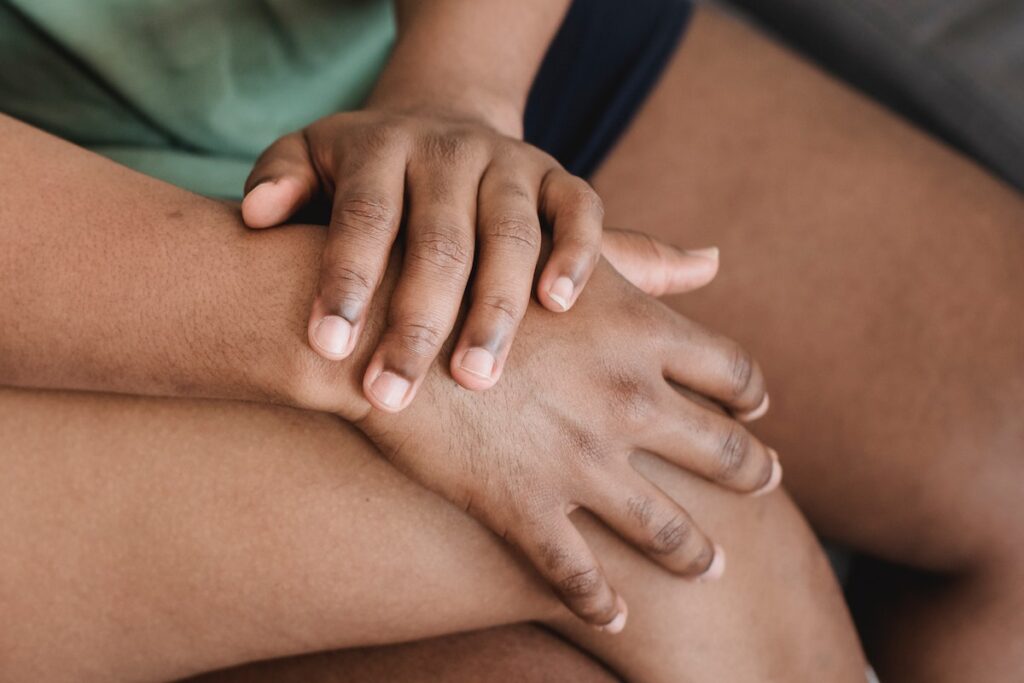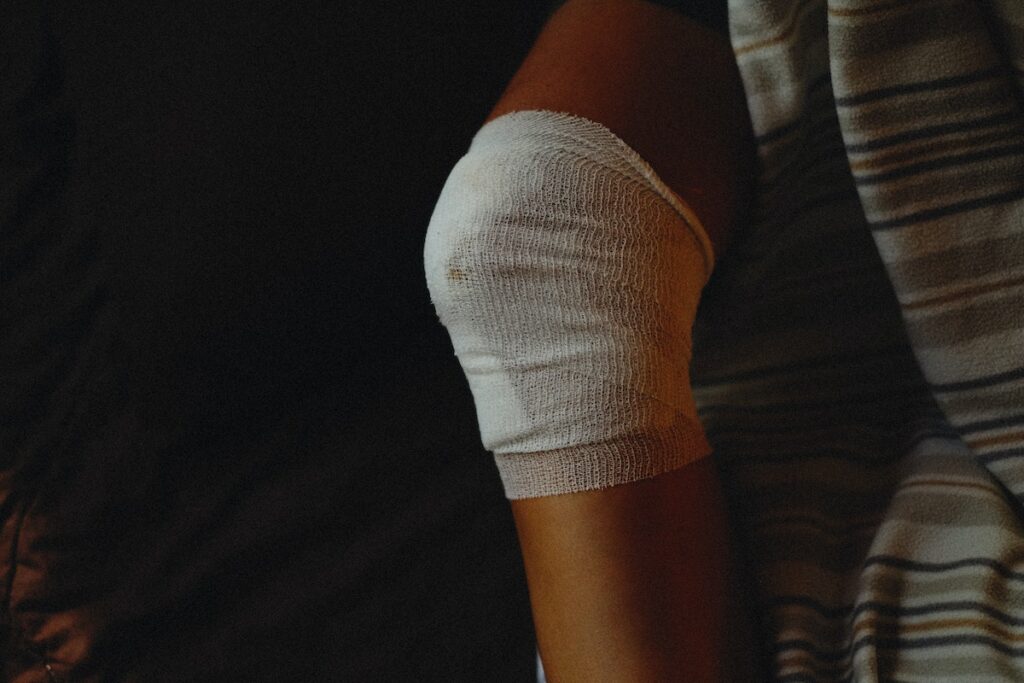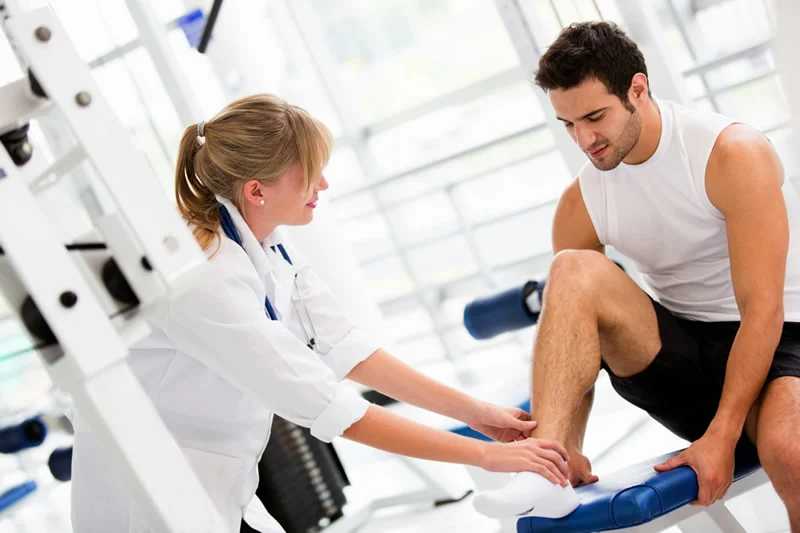Introduction
The knee is a complex and critical joint that plays a pivotal role in supporting body weight, facilitating movement, and maintaining stability. However, due to its frequent use and vulnerability to stress, the knee is susceptible to various injuries. Knee injuries can range from mild sprains and strains to severe ligament tears and fractures, impacting individuals of all ages and activity levels. In this comprehensive 3000-word article, we will delve into the world of knee injuries, exploring their causes, types, symptoms, diagnosis, treatment options, and essential preventive measures.
Section 1: Anatomy of the Knee
Understanding the anatomy of the knee is fundamental in comprehending the various structures that can be affected by injuries. The knee joint consists of four major components:
- Bones: The knee joint is formed by the femur (thighbone), tibia (shinbone), and patella (kneecap).
- Ligaments: Crucial for providing stability to the knee, the ligaments include the anterior cruciate ligament (ACL), posterior cruciate ligament (PCL), medial collateral ligament (MCL), and lateral collateral ligament (LCL).
- Cartilage: The knee has two types of cartilage: articular cartilage, which covers the ends of the bones to allow smooth movement, and the meniscus, which acts as a shock absorber between the femur and tibia.
- Tendons: Tendons connect muscles to bones and play a role in knee movement and function. The patellar tendon connects the quadriceps muscles to the patella and tibia.
Section 2: Causes of Knee Injuries
Knee injuries can occur due to various factors, including:
- Sports and Physical Activities: High-impact sports such as football, soccer, basketball, and skiing often lead to knee injuries due to sudden movements, collisions, or repetitive stress.
- Overuse: Repeated stress on the knee joint from activities like running or jumping can cause overuse injuries.
- Accidents and Falls: Traumatic accidents and falls can result in direct impact to the knee, leading to injuries.
- Aging and Degeneration: As people age, the knee’s cartilage may wear down, increasing the risk of osteoarthritis and other degenerative knee conditions.
- Poor Biomechanics: Misalignment of the knee or improper movement patterns can put excess stress on the joint, leading to injuries.
Section 3: Types of Knee Injuries

Knee injuries can be categorized into several types, including:
- Ligament Injuries: Tears or strains in the ACL, PCL, MCL, or LCL due to sudden twisting, hyperextension, or direct impact.
- Meniscus Tears: Tears in the C-shaped cartilage discs (medial and lateral meniscus) that cushion the knee joint.
- Patellar Injuries: Conditions such as patellar tendonitis or patellar dislocation that affect the kneecap and surrounding structures.
- Fractures: Breaks in any of the knee bones, such as the patella, femur, or tibia.
- Tendon Injuries: Injuries to the tendons around the knee, such as the quadriceps or patellar tendons.
Section 4: Symptoms of Knee Injuries
Knee injuries can present a wide range of symptoms, depending on the type and severity of the injury. Common symptoms include:
- Pain: Localized pain around the knee or diffuse discomfort throughout the joint.
- Swelling: Inflammation and swelling due to fluid accumulation in the knee joint.
- Instability: Feeling of the knee “giving way” or being unable to bear weight.
- Restricted Range of Motion: Difficulty fully bending or straightening the knee.
- Clicking or Popping: Audible sounds within the knee during movement.
- Bruising: Discoloration around the knee due to blood leakage from damaged blood vessels.
Section 5: Diagnosing Knee Injuries
Accurate diagnosis is crucial for appropriate treatment and management of knee injuries. The diagnostic process may include:
- Medical History: The healthcare provider will inquire about the patient’s symptoms, the mechanism of injury, and any previous knee issues.
- Physical Examination: A thorough examination of the knee, checking for swelling, tenderness, and range of motion.
- Imaging Studies: X-rays, MRIs, or CT scans can provide detailed images of the knee’s internal structures, revealing fractures, ligament tears, or cartilage damage.
- Arthroscopy: A minimally invasive procedure in which a small camera is inserted into the knee joint to visualize and diagnose the injury.
Section 6: Treatment Options for Knee Injuries

Treatment for knee injuries depends on the type and severity of the injury. Common treatment options include:
- Rest and Ice: Resting the knee and applying ice can help reduce swelling and promote healing.
- Pain Medication: Over-the-counter pain relievers may be used to manage pain and inflammation.
- Physical Therapy: Targeted exercises and stretches can strengthen the knee and improve range of motion.
- Bracing or Splinting: Supportive braces or splints can stabilize the knee during healing.
- Corticosteroid Injections: Injections may be used to reduce inflammation and provide temporary pain relief.
- Arthroscopic Surgery: Minimally invasive procedures to repair or reconstruct damaged ligaments or remove torn cartilage.
- Open Surgery: In severe cases, open surgery may be required to repair fractures or complex ligament injuries.
Section 7: Rehabilitation and Recovery
Rehabilitation is crucial for successful recovery from knee injuries. It typically involves:
- Physical Therapy: A tailored rehabilitation program to regain strength, flexibility, and stability in the knee.
- Gradual Return to Activities: Carefully reintroducing activities to avoid re-injury.
- Home Exercises: Continued exercises at home to maintain knee strength and flexibility.
- Follow-Up Care: Regular follow-up appointments with healthcare providers to monitor progress.
Section 8: Preventing Knee Injuries
Preventing knee injuries is possible through various proactive measures:
- Warm-Up: Always warm up before physical activity to prepare the muscles and joints for movement.
- Strengthening: Engage in exercises that strengthen the muscles around the knee, such as quadriceps and hamstrings.
- Proper Footwear: Wear appropriate footwear for sports and activities to provide adequate support and shock absorption.
- Avoid Overtraining: Allow ample rest and recovery time between intense physical activities.
- Correct Technique: Ensure proper form and technique when engaging in sports or exercise.
- Maintain a Healthy Weight: Excess body weight can increase stress on the knee joint.
Conclusion
Knee injuries can significantly impact an individual’s quality of life, affecting mobility, comfort, and overall well-being. Understanding the different types of knee injuries, their symptoms, and available treatment options is essential for prompt and appropriate care. Preventive measures, such as maintaining proper form during physical activities, engaging in regular strength exercises, and using proper protective gear, can significantly reduce the risk of knee injuries. If an injury occurs, seeking medical attention promptly and following a comprehensive rehabilitation program can help ensure a successful recovery and minimize the likelihood of recurrent issues. With proper care and awareness, individuals can protect their knees and maintain an active, healthy, and fun life.



